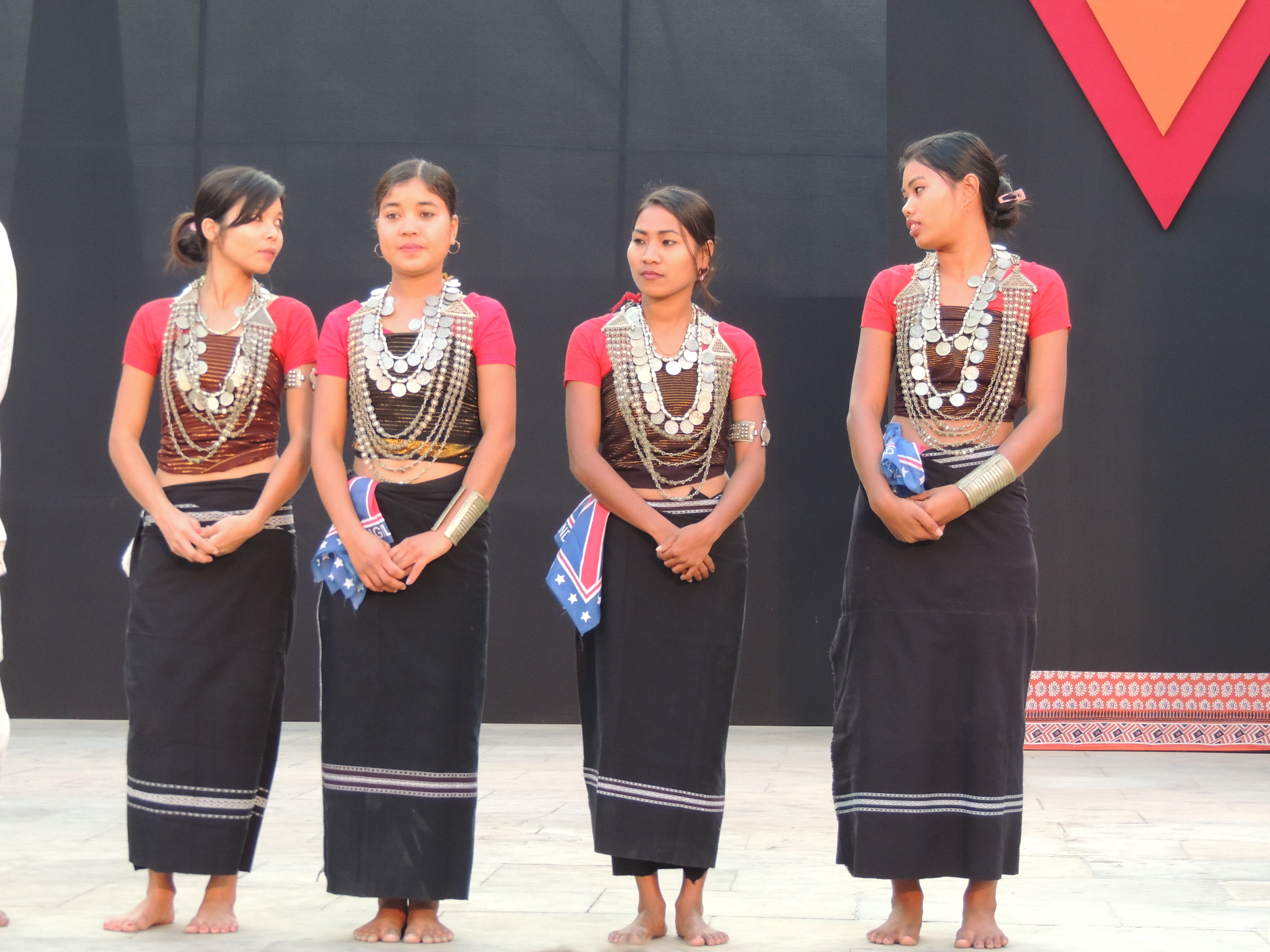Tripuri Dances on:
[Wikipedia]
[Google]
[Amazon]
There are many different dances of the

Tripuri people
The Tripuri (also known as Tripura, Tipra, Tiprasa, Twipra) are an ethnic group originating in the Indian state of Tripura. They are the inhabitants of the Twipra/Tripura Kingdom in North-East India and Bangladesh. The Tripuri people through t ...
, the largest ethnic group in the state of Tripura.
Types of dances
Goria
The Goria dance is performed during the Goria puja festival, in the month of April, and includes people from other ethnic groups in addition to the Tripuri themselves. The dance is accompanied by drums andflutes
The flute is a family of classical music instrument in the woodwind group. Like all woodwinds, flutes are aerophones, meaning they make sound by vibrating a column of air. However, unlike woodwind instruments with reeds, a flute is a reedless ...
,Debapriya Deb Barman, ''Treatise on Traditional Social Institutions of the Tripuri Community'', p. 104, Directorate of Research, Department of Welfare for Scheduled Tribes and Scheduled Castes, Government of Tripura, 1984 and consists of both sexes dancing from village to village in a gradually increasing tempo through various mudra which mimic the movements of different aspects of nature.
Hai-hak
Hai-hak is a dance which is specific to the Halam community within the Tripuri. It is performed to honor the goddessLakshmi
Lakshmi (; , sometimes spelled Laxmi, ), also known as Shri (, ), is one of the principal goddesses in Hinduism. She is the goddess of wealth, fortune, power, beauty, fertility and prosperity, and associated with ''Maya'' ("Illusion"). Alo ...
after the annual harvest, and is typically done at her place of worship.
Hojagiri
Hojagiri
Hojagiri is a folk dance, performed in the state of Tripura, India by *Tripuri people
The Tripuri (also known as Tripura, Tipra, Tiprasa, Twipra) are an ethnic group originating in the Indian state of Tripura. They are the inhabitants of ...
is a dance performed by young women of the Reang clan. It consists of four to six members in a team singing and balancing various objects on their head and hands, while only moving the lower half of the body.
Jhum
Jhum
The traditional shifting cultivation farming technique of indigenous communities and Bengalis in the Chittagong Hill Tracts in Bangladesh and nearby regions in Arunachal Pradesh, Mizoram, and Nagaland in India is known as jhum cultivation.
Tec ...
is a dance which is typically performed by girls and boys.
Lebang Boomani
Both men and women participate in the Lebang Boomani dance. The men usebamboo
Bamboos are a diverse group of evergreen perennial flowering plants making up the subfamily Bambusoideae of the grass family Poaceae. Giant bamboos are the largest members of the grass family. The origin of the word "bamboo" is uncertain, ...
clappers called ''tokkas'' to set a beat while the women join them waving colorful scarves to catch the lebang. The rhythmic play of the clappers is thought to attract the lebang out of their hiding places allowing the women to catch them. The dance is accompanied by musical instruments like the flute, khamb, the percussion instrument
A percussion instrument is a musical instrument that is sounded by being struck or scraped by a beater including attached or enclosed beaters or rattles struck, scraped or rubbed by hand or struck against another similar instrument. Ex ...
''pung'', and the sarinda. Women adorn themselves with silver chains and bangles and ear and nose rings made of bronze.
Mamita
The Mamita dance is performed at the Mamita Festival, the harvest festival of the Tripuri people.Mosak sumani
Mosak sumani is a dance which is performed as a hunting ritual. It mimics the act of hunting through elaborate gestures.Owa
The dance is one of the traditional dances of the Mog people of Tripura, who also perform the Sangrai dance. The Mogs are Buddhists, and the Owa -Cho -labre is one of their main Buddhist festivals. The Mogs celebrate the Owa festival on the full moon day of Ashwin in theBengali calendar
The Bengali Calendar or Bangla Calendar ( bn, বঙ্গাব্দ , , Baṅgābda), colloquially ( bn, বাংলা সন, Baṅgla Śon), is a solar calendar used in the Bengal region of the Indian subcontinent. A revised version of th ...
. They attend the Buddhist temple, and later launch paper boats or toy boats in the river.
Sangrai
The Sangrai dance is also performed by the Mog tribe during the Sangrai festival in April.References
{{DEFAULTSORT:Tripuri Dances